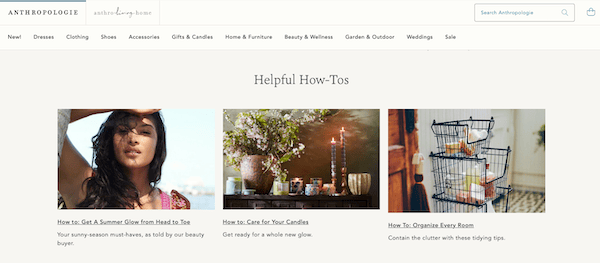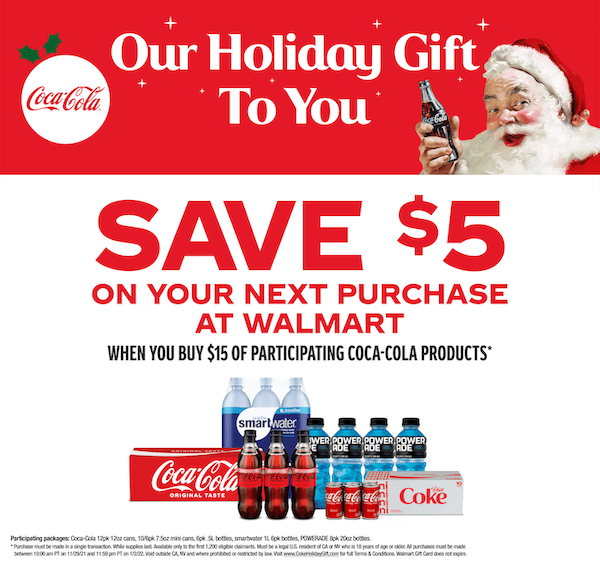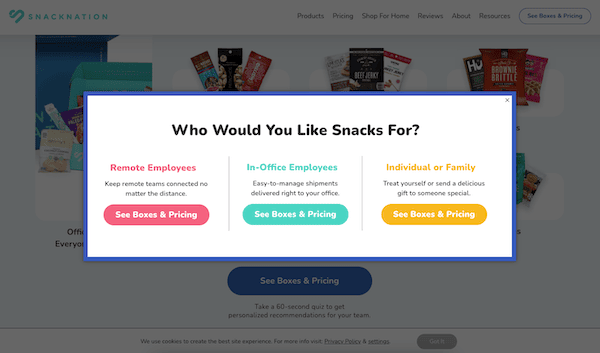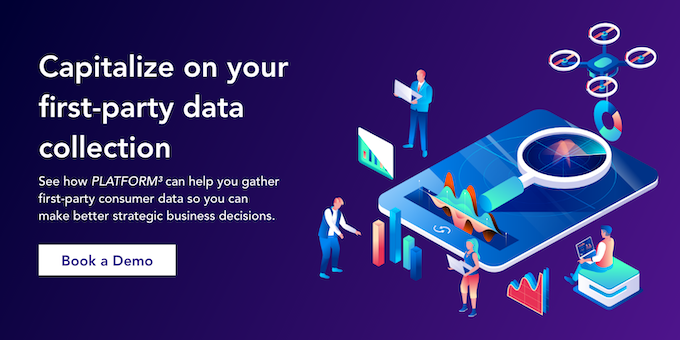How To Influence Consumer Behavior With Marketing Psychology Tactics
Brands can shape consumer journeys in every stage of the path to purchase, from awareness and acquisition to loyalty and advocacy. In order to do so, they need marketing psychology theories and first-party data to understand user motivations, influence consumer behavior, and effectively segment and target their audiences. Data helps marketers look at individual consumers, while psychology helps them understand consumers as a whole. What is marketing psychology, and how does it work?
What is marketing psychology?
In marketing psychology, brands apply psychological theories about human behavior to their business decisions and marketing strategies. They primarily focus on behavioral principles that help drive desired outcomes like increased brand awareness, user engagement, and customer loyalty. For example, they can run a marketing campaign using the phrase “limited-time offer” to create a sense of urgency and invoke the fear of missing out. They can offer a free gift with purchase to boost sales and satisfy consumers’ need for instant gratification.
Most, if not all advertising efforts use some aspects of marketing psychology, sometimes unintentionally. When brands educate potential audiences, highlight product features, provide special offers, and reward customer loyalty, they’re connecting with consumers’ emotions and influencing their decisions.
Benefits and challenges of marketing psychology
The main advantage of marketing psychology is its ability to take known patterns of human behavior and apply them to the different stages of the path to purchase without needing to conduct extensive research. For example, marketers might use the commitment bias to turn leads into customers through progressive profiling practices, slowly asking users for more information over time. They can build trust by running user-generated content campaigns on Facebook and Instagram to act as social proof. Without established theories, brands would need to invest time and resources to develop their own.
Another significant benefit of marketing psychology is its ability to support and integrate seamlessly with consumers’ zero-party and first-party data. While brands use behavioral theories to avoid starting from scratch, they also need to capture actionable insights to build effective buyer personas. For example, color theory may tell marketers to use blue for call-to-action buttons, as people associate blue with trustworthiness and authority. However, over time, a brand may find that their own customers respond better to red, which evokes action and excitement.
The biggest challenge of marketing psychology is navigating the fine line between leveraging cognitive biases to create effective campaigns and exploiting or deceiving consumers. Brands need to use marketing psychology responsibly to avoid manipulating shoppers’ purchase decisions and behaviors in an unethical fashion, such as only making promises they can keep and offering capabilities they actually have.
Marketing psychology best practices
To start, brands should focus on consistently creating a sense of authenticity. Emotional appeals play a significant role in consumers’ purchasing decisions, as they want to align themselves with brands who share their values and understand their perspectives. For example, they can create a mission statement that tells a story about the problems they solve from a human perspective instead of a corporate perspective. Marketers can develop a brand voice and personality through relatable content and visuals.
Brands also need to establish and continuously build consumer trust. One of the best ways to do so is by highlighting their own advantages and disadvantages, as acknowledging their own flaws and stating their intentions for solving them makes them appear more honest. For example, they can address shipping delays and manufacturing issues on social media. They can send out a survey for feedback on how to improve their website or emails.
Lastly, brands should supplement marketing psychology with zero-party and first-party data. As mentioned previously, while consumer behavior theories are supported by years of research and experimentation, they aren’t always universally applicable. Instead of taking marketing psychology at face value, brands should capture audience insights and leverage A/B testing to get a better understanding of their own consumers.
Awareness
In the awareness stage, brands are focused on consumer outreach. They want to position themselves in front of their target audience, understand their interests and expectations, and stay top of mind to acquire new leads.
Information gap theory
The information gap theory states that when people have gaps in their knowledge about a topic that interests them, they’ll seek out ways to learn more. For consumers, this can also mean recognizing an unfulfilled need and looking for products or services that can help them.
Marketers leverage the information gap theory by using phrases like “learn more” and “find out how” to attract and educate consumers. For example, they can bring awareness to potential audiences by creating targeted social media campaigns that demonstrate the benefits and functionality of their products. They can write articles that mention their products with titles that include words like “how-to”, “tricks”, and “hacks”. These tactics help boost social and website traffic, bringing awareness to consumers looking for brands who can fulfill their needs.
Anthropologie is an American lifestyle brand that sells apparel, furniture, home decor, and beauty products. Their blog features a “Helpful How-Tos” section that educates readers on topics like home organization, makeup trends, party planning, and more. While not every article directly relates to their own products, it helps keep their brand top of mind for related keywords.
Mere exposure effect
The mere exposure effect, also known as the familiarity principle, is a psychological phenomenon where people start to like something just because they’ve been exposed to it more often, regardless of other factors. For example, listening to a song on repeat may increase our enjoyment of it, even when it isn’t our preferred music genre or artist.
Brands typically take advantage of the mere exposure effect by creating paid campaigns and retargeted ads for search engines, websites, and social networks. While marketers generally focus on conversions over impressions, increased awareness reinforces familiarity and can even build trust over time, leading to desired engagement like clicks, shares, and purchases.
Marketers can use remarketing tactics to create a mini-sales funnel from awareness to acquisition, starting with bringing attention to their brand, then educating new audiences about their products, and finally providing limited-time deals to incentivize consumer engagement. For example, Spotify’s Twitter ads offer potential users an exclusive Spotify Premium discount.
Acquisition
In the acquisition stage, brands are focused on consumer registration. They want to encourage audiences to make a purchase, incentivize them to engage with their brand, and turn potential leads into new customers.
Reciprocity principle
The reciprocity principle states that people are more willing to do something for someone else if the other person does something for them first. In other words, consumers are more likely to engage with brands who give them an incentive to do so.
Brands can form reciprocal company-consumer relationships in many different ways. For example, they can ask consumers to subscribe to their email newsletter to receive exclusive discount codes and news about upcoming sales. They might encourage followers to like their social media posts to enter a sweepstakes contest or product giveaway.
Marketers can also leverage the reciprocity principle by offering a free gift in exchange for a desired action, such as a blog comment, newsletter subscription, or product purchase. Gift with purchase programs are a popular way for brands to boost sales of specific products and acquire new customers at the same time. For example, Coca-Cola’s holiday promotion asked consumers to purchase $15 worth of qualifying Coca-Cola products from Walmart to receive a $5 Walmart digital gift card.
Commitment bias
The commitment bias is people’s tendency to stay committed to past behaviors and decisions, typically because we’ve invested a significant amount of time and/or resources into it. While the commitment bias and sunk cost fallacy can have negative connotations, brands can use it responsibly to acquire customers, drive purchases, and even foster long-term customer loyalty.
One of the best ways to leverage the commitment bias during the acquisition stage is through progressive profiling. Rather than immediately asking consumers to make a purchase, brands slowly build a relationship with potential customers by requesting small amounts of data at a time. For example, they may only ask people for their first name and email address in order to join their mailing list, then send a short survey to capture their content preferences. The more information consumers provide, the more likely they are to fully commit to a brand, as they’ve started actively building a relationship with them.
When practicing progressive profiling, brands should showcase their personalization capabilities so potential customers can see how their individual needs will be met, increasing the likelihood of acquisition. For example, SnackNation is a snack delivery service aimed at businesses. They start by asking website visitors whether they want snacks for remote employees, in-office employees, or individuals or family. Then, users answer a short survey about their budget, their snack preferences, the number of recipients, and so on. By the end of the survey, they may be more likely to create an account and make a purchase than if they were pushed to buy something right away.
Purchase
In the purchase stage, brands are focused on initial and repeat sales. They want to drive product purchasing, stand out from their competitors, and increase their return on investment and customer lifetime value.
Scarcity modeling
Scarcity modeling is the perception that the harder it is to obtain something, such as a product or an offer, the more valuable it becomes. In other words, when we think something is about to run out of stock or will never be available again, we’re more likely to purchase it so we don’t miss out. Loss aversion is a similar concept in which people prefer to avoid losses than acquire gains, increasing the effectiveness of phrases like “limited time”, “last chance”, and “act now”.
Brands can use scarcity modeling to boost awareness and engagement, such as asking people to subscribe to their newsletter in exchange for a discount for a limited time. However, they primarily leverage it to drive purchases and encourage shoppers to act quickly. Around 45% of consumers are more interested in learning about or buying products that are in short supply.
Marketers create a sense of urgency and scarcity by limiting the number of participants, the window of time, or the number of products or offers available. For example, Big Red’s ‘Sweet Swag’ giveaway asked consumers to purchase $30 worth of participating products to receive an exclusive Big Red promotional t-shirt, only available to the first 1,000 consumers to reach the $30 threshold.
Anchoring effect
The anchoring effect states that people commonly weigh their decisions based on first impressions and/or comparisons. While the anchoring effect plays a big role in the awareness stage, as brands need to create strong initial touchpoints to get consumers’ attention, it can also be effective for influencing their final purchase decisions.
The most common application of the anchoring effect is through product pricing. When consumers visit websites like Amazon or Travelocity, they typically see a list price that’s been crossed out, followed by a discounted price. They “anchor” themselves to the list price, compare it to the discount, then make the purchase to avoid missing a good deal. Brands may even feature premium-priced products to make their regular-priced products seem more affordable, resulting in more sales than if all of their products were similarly priced.
Marketers can also use the anchoring effect to drive higher-value purchases, even if it isn’t exactly what consumers want. For example, subscription-based services like Monday.com typically offer a few different plans where the more users pay, the more features they get. They often highlight one of the more expensive plans with phrases like “Best Value” or “Most Popular” to encourage consumers to pay more for features they weren’t necessarily looking for.
Loyalty & Advocacy
In the loyalty and advocacy stages, brands are focused on user retention and customer loyalty. They want to create content and messaging that leads to better engagement, build a community of dedicated consumers, and turn loyal customers into brand advocates.
Social proof
Social proof, also known as informational social influence, is the idea that people observe and emulate other people’s behavior to fit in with everyone else. For example, if we want to visit a restaurant we’ve never been to before, we might look for reviews to get food recommendations or to see if they have a dress code. If we want to buy a new phone, we may ask family and friends for suggestions or look to influencers for inspiration.
Consumers, especially younger generations like millennials and Gen Zers, are more likely to trust other people than brands themselves. Marketers take advantage of this by leveraging social proof through case studies, testimonials and reviews, and user-generated content. They may also include awards, certifications, and experts to increase their credibility, such as Facebook and Twitter’s blue check mark for verified accounts. Social proof tactics help drive sales, encourage consumer engagement, build user communities, and identify brand advocates.
Brands can also incorporate social proof through celebrity endorsements and influencer marketing, expanding their reach to the celebrity or influencer’s own audience. For example, Simple®, an American skincare brand, regularly partners with beauty influencers to promote their products. They also feature the hashtag #MakeUp4Makeup to encourage user-generated content and continuously build their brand community.
Group belongingness
Maslow’s hierarchy of needs theorizes that people are motivated by five basic categories of needs, one of which is “love and belonging”. People seek out acceptance and emotional connections through family, friends, and social groups like classmates, colleagues, and team members. While social proof is about looking to others for guidance and inspiration, belongingness focuses more on developing reciprocal relationships and like-minded communities.
Marketers create a sense of belonging through user communities to nurture customer loyalty. The more emotionally attached consumers are to their brand, products, and services, the more loyal they become. Brands can build communities through loyalty programs, online forums, social networks, messaging platforms, and special events. This helps them foster one-to-one relationships, amplify their consumers’ voices, and get a better understanding of how to meet their expectations.
Some brands are known to have a dedicated “cult following”, characterized by their love for the brand and their shared similarities such as age, interests, and personality traits. Fans of companies like Apple, Peloton, and Starbucks may even advocate for them without needing an incentive to do so, as they genuinely believe in the brand’s values and feel like they belong to a supportive community.
Navigate your consumers’ path to purchase with data-driven marketing campaigns
Marketing psychology works at every stage of the path to purchase, from awareness and acquisition to loyalty and advocacy. Understanding the principles and patterns behind consumer behavior helps brands learn how to influence it. However, they should also prioritize capturing users’ first-party data to supplement - or subvert - marketing psychology theories with actionable insights.
With 3 tier logic’s PLATFORM³, brands can create and launch marketing campaigns like loyalty programs, contests and giveaways, and gift with purchase promotions to leverage consumer behavior theories and collect customer data. The Data Capture & Analytics dashboard helps marketers make informed business decisions about how to better connect with consumers throughout their buyer’s journey. To learn more, chat with an expert today.









